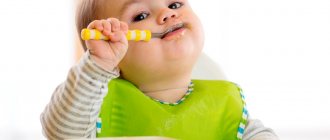Household work in the senior group
The teacher invites the children to sit on chairs placed in a semicircle on the carpet. Suggests considering the following constructors:-Guys, what kind of constructor do we have in our group? (large, medium, small). How are they different from each other? (varies in size).
-Guys, how are we going to wash the construction set? What will we do first? What will we do next?
The teacher listens to the children's answers and offers to tell the sequence of actions.
-Guys. Let's show and tell you how we will wash our constructor.
The teacher offers to talk and show one child a sample action for washing toys (1 child - 1 piece of construction set).
—
Guys, what tools will we use?
The teacher draws the children's attention to the table.
—
What tools do you see? (rag, container with water - basin, detergent - soap, watering can). What are they for?
- Guys, do we need all the tools to wash the toys?
-What's extra? Why?
-Where can we use the watering can?
-That's right, we can use the watering can in caring for plants, but we won't need it for washing toys, let's put it away.
-Do we need all the other tools? Do we leave them?
- Guys, but in order to operate with tools, we must remember the safety rules.
A bowl of water - you can spill water, but what happens if we spill water?
The teacher listens to the children's answers.
Soap, soapy rag - what will happen if we throw them?
The teacher listens to the children's answers.
-Guys, everything will be fine if we follow the rules of behavior and help each other.
-Guys, we need to wash several types of construction sets, and to do this faster, I suggest you unite in teams. Look, multi-colored cards are attached to our construction sets, and on my table there are multi-colored cards, but turned over with the colored side down. I suggest you take turns choosing a card and going to the constructor on which the designation is the same color as yours. The teacher observes the unification of children using lots.
Guys, look carefully, your cards indicate not only the construction set, but also the tool with which you will work, find and put it next to your workplace.
- Guys, we looked at what construction sets we have in our group, remembered how to wash them, chose tools, remembered safety precautions, united into teams and distributed responsibilities among ourselves, we are ready to work, all we have to do is put on our aprons.
Summary of educational activities for self-care in the first junior group of preschool educational institutions
Synopsis of educational activities on self-care in the first junior group.
Topic: “Let's teach Antoshka to wash himself” Goal : Formation of self-care skills Objectives: 1. To form children’s value attitude towards maintaining cultural hygienic skills;
2. To consolidate children’s knowledge of the names and purposes of personal hygiene items. 3. Improve skills in using these items. 4. Activate speech, replenish vocabulary. 5. Consolidate children’s knowledge about the sequence of actions when washing, using an algorithm and artistic expression. 6. Develop fine motor skills and sensory perception. 7. Cultivate the desire to be clean, neat and beautiful. Progress of the lesson:
Educator: In the morning the kids got up and came to their kindergarten. We are glad to see you as always, We have had guests here since the morning, Say hello, friends! Children greet those present. Educator : Now sit quietly on the chairs. I have prepared a wonderful poem for you that says that everyone washes their face in the morning. The teacher shows the children a picture of animals washing themselves.
Early in the morning, at dawn, little mice, and kittens, and ducklings, and bugs and spiders wash themselves.
Only you didn’t wash your face, and you were left dirty, and your stockings and shoes ran away from being dirty. Shows a picture of a dirty boy. Educator : Guys, look at this boy, his name is Antoshka, he alone did not wash himself and remained dirty. Do you know, why? Children : No. Educator : Then let's call him to us and ask. The teacher brings out the boy's doll Antoshka with dirty palms. The teacher turns to Antoshka Teacher : Antoshka, tell me, why are you so dirty? You probably don't know how to wash your face? Antoshka : No, I don’t know how to wash myself. Educator: Guys, do you know how to wash your face? Children's answers. Educator : Let's teach Antoshka how to wash himself too. Let's look at pictures of how to wash your hands correctly. The teacher and children look at the washing sequence diagram. Educator: Antoshka, did you remember the procedure for washing? Antoshka: Not really. Educator : I have a basket with washing items in it. Now I will show them to you. And you tell me what needs to be done with them. Questions for children : What is this? Children : Soap. Educator : What is it for? Children : Lather your hands. Educator : Let's show how to wash your hands with soap. The teacher and the children imitate washing their hands with soap. Educator : Now we’ll show you how to wash your hands with soap. Children show. Educator: What kind of object is this? Children : Towel Teacher: Why is it needed? Children: Wipe your hands. Educator : We'll show you how to dry your hands with a towel. They imitate wiping their hands with a towel. Educator: Here, Antosha, what objects help us to be clean, and now we will teach you how to use them. Educator : Guys, where do we always wash ourselves? Children : In the washroom. Educator : Let's go with Antoshka to the washroom and show him how to wash himself. The teacher with the children and Antoshka go to the washroom. The diagram is attached above the washbasins. Educator : Guys, before you start washing your hands, what should you do? Children: Roll up your sleeves. Educator : Tanya, show me how to do this. The child shows how to roll up the sleeves. Educator : Guys, let's roll up all our sleeves. And he does the same to the doll. Educator: What do we do next? Children : Let's open the water. The teacher and the children open the tap. Educator : We opened the tap, what do we do next? Children : First, we wet our hands with water. The teacher, Antoshka and the children wet their hands with water. Educator : What do we do next? If the children find it difficult to answer, the teacher prompts the children. Children : Take soap and lather your palms. The teacher soaps Antoshka's hands, the children repeat the soaping process. Educator: Let's rub one palm against the other. He rubs Antoshka's palms. Children do the same. Educator : Now we wash off our soapy palms with water. Everyone washes the soap off their hands. Educator : So we washed ourselves. What, Timofey, needs to be done now? Child : Shake water off your palms over the sink. The children do it. The teacher shakes the water off the doll's hands. Educator: Correct, then turn off the water in the tap. Children turn off the tap. Educator : Dry your hands with a towel, lower your sleeves. The children show how it should be done. The teacher wipes the doll’s hands and lowers his sleeves. Educator : Now you, Antosha, are clean and can safely go to your home. Just promise our guys that you will wash your face every day. Antoshka : I now know how to wash my face properly and I promise to do it every day. Educator : And we guys with clean hands can now safely play with toys. Let's go to the game room. Antoshka says goodbye to the children and leaves.
We recommend watching:
Scenario of spring entertainment for children of the younger group Integrated lesson with children of the first group of early age Synopsis of educational activities in the 1st junior group to familiarize themselves with the world around them. Visiting a fairy tale Technological map for organizing joint activities with children of the 2nd early group
Similar articles:
Lesson notes for the 1st junior group of kindergarten. Introduction to clay
Lesson summary for an early age group. Getting to know the sun
Summary of a game development lesson in kindergarten in the second group of early age on the topic: Animals
Summary of a game lesson for children of the third year of life on the topic: Octopus
Summary of a game lesson for children of the third year of life on the topic: Clocks
Calendar for developing self-care skills
We have compiled a rough list of skills that children typically master by a certain age. Using this table, parents can figure out how typically their baby is developing. Small discrepancies with the table may be caused by individual characteristics and do not require special attention, but if you notice that the child has not mastered even half of the skills on the list, you may need to contact a child psychologist who will identify the reasons for such a lag and help correct it.
| Age | Skills mastered |
| 0-6 months |
|
| 6-12 months |
|
| 1-2 years |
|
| 2-3 years |
|
| 3-4 years |
|
| 4-5 years |
|
| 5-6 years |
|
conclusions
Despite the fact that self-service skills include a fairly significant number of mastered operations, in general, children who do not experience developmental delays cope with these tasks without difficulty. However, parents should remember to set aside time to master these skills through games and lots of repetition.
If a child systematically fails to cope with one or more self-care skills, parents should be wary and, if possible, seek advice from a child psychologist, because such a picture can be associated both with harmless individual characteristics of the child’s upbringing and development, and with more serious problems, for example, attention deficit hyperactivity disorder, and can also be an indicator of the child’s emotional distress.
What are self-care skills?
First, let's understand what is included in the concept of self-care skills. In general, this is the child’s ability to independently maintain hygiene and perform necessary self-care procedures. Self-care skills include the habit of regularly brushing your teeth and combing your hair, going to the toilet on your own, dressing and undressing, using cutlery accepted in society, and so on. Sometimes self-care skills also include basic communication skills with others.


